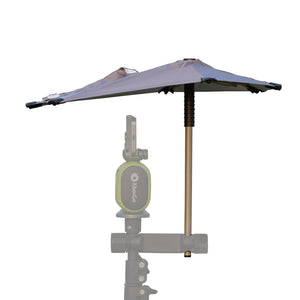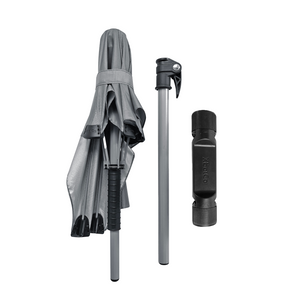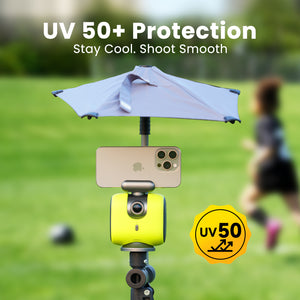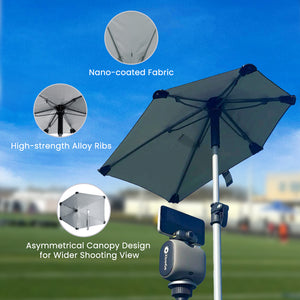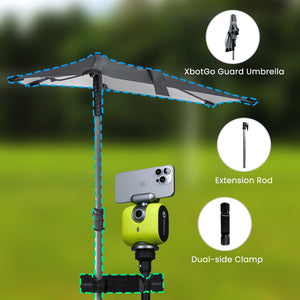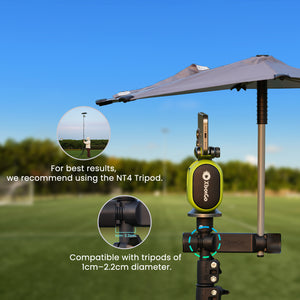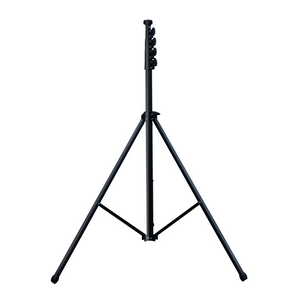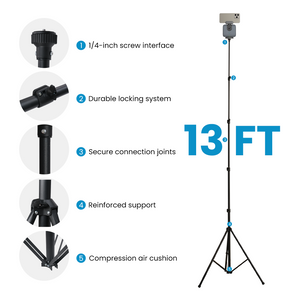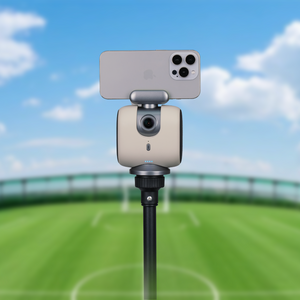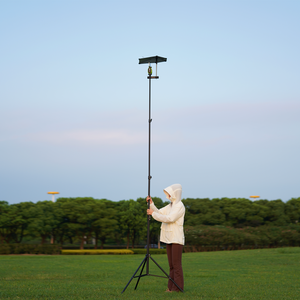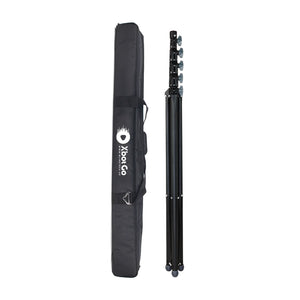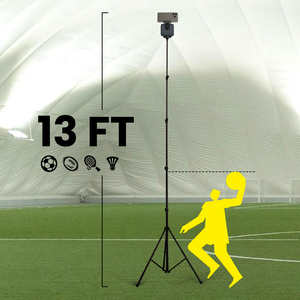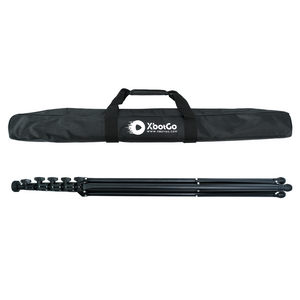XbotGo Chameleon AI Sports Camera
Soccer Ball Size by Age: The Essential Guide
A 6-year-old struggling to kick a ball that barely moves, their face etched with frustration. Now imagine that same child confidently dribbling a properly sized ball, their smile growing with each successful touch. The difference? Simply choosing the right soccer ball size.
If you're searching for the correct soccer ball size for your young player, you're not alone. This fundamental decision impacts everything from skill development to injury prevention, yet many parents and coaches remain uncertain about which size to choose. Let's clear up the confusion once and for all.
Why Soccer Ball Size Matters More Than You Think
When children use appropriately sized equipment, they develop proper technique that serves them throughout their soccer journey. Using the wrong size ball isn't just inconvenient—it can create lasting problems that become increasingly difficult to correct.
Think about it this way: asking a young child to play with an adult-sized ball is like asking you to do stepovers with a beach ball. The physics simply don't work. Children's smaller feet and shorter legs make it physically impossible to properly control oversized equipment, leading to compensatory movements and poor technique habits.
The consequences extend beyond technique. Using oversized balls can lead to:
- Increased risk of injury from overextension
- Frustration and decreased enjoyment
- Slower skill development
- Reduced confidence on the field
Complete Soccer Ball Size Guide by Age
Here's your comprehensive reference for soccer ball sizing:
Size 1 (Mini Ball)
- Ages: All ages for skills training
- Circumference: 18-20 inches
- Weight: 200-250 grams
- Best for: Juggling practice, footwork drills, collectibles
Size 2
- Ages: 3-5 years
- Circumference: 20-22 inches
- Weight: 250-280 grams
- Best for: Early learning, basic skill development
Size 3
- Ages: 5-8 years
- Circumference: 23-24 inches
- Weight: 300-320 grams
- Best for: Youth games, organized play
Size 4
- Ages: 8-12 years
- Circumference: 25-26 inches
- Weight: 350-390 grams
- Best for: Junior competition, advanced training
Size 5
- Ages: 12+ years
- Circumference: 27-28 inches
- Weight: 410-450 grams
- Best for: Official matches, high school and beyond
Age-Specific Recommendations and Development Focus
Ages 3-5: Building the Foundation
At this stage, children are developing basic motor skills and coordination. A Size 2 ball provides the perfect introduction to soccer, though some programs start with Size 3 for 5-year-olds.
The lightweight design prevents fatigue during play, while the manageable size allows small feet to make meaningful contact. Parents consistently report that their young children can actually move these balls effectively, building confidence with each kick.
Focus areas for this age group:
- Basic ball familiarity
- Simple kicking motions
- Hand-eye (foot-eye) coordination
- Fun and engagement over technique
Ages 5-8: Developing Core Skills
This is when most children begin organized soccer and start learning fundamental techniques. Size 3 balls are specifically designed for this critical period, offering the perfect balance between challenge and achievability.
During these years, players develop:
- First touch control
- Basic passing techniques
- Dribbling fundamentals
- Spatial awareness
The Size 3 ball's proportions allow children to execute these skills successfully, creating positive feedback loops that encourage continued participation and improvement.
Ages 8-12: The Transition Years
Size 4 balls serve as the crucial bridge between youth and adult soccer. This period involves significant skill refinement and the introduction of more complex techniques.
Players at this stage work on:
- Advanced ball control
- Accurate passing over distance
- Shooting mechanics
- Position-specific skills
The slightly larger size and increased weight prepare players for the eventual transition to Size 5 balls while still accommodating their developing strength and coordination.
Ages 12+: Meeting Professional Standards
Once players reach 12 years old, they're ready for Size 5 balls—the official standard used in all professional competitions worldwide. This transition coincides with significant physical development and prepares players for high school competition and beyond.
At this level, players focus on:
- Power and precision
- Advanced tactical play
- Competition-ready skills
- Physical conditioning
The Technology Factor in Modern Youth Soccer
Today's youth soccer development increasingly incorporates technology alongside traditional methods. AI-powered camera systems like the XbotGo Chameleon can automatically track and record games at any level, adapting to different ball sizes and age groups. This allows coaches and parents to review player development and technique regardless of equipment size, providing valuable feedback without the distraction of manual filming during games.
Choosing Quality Within Your Budget
Ages 3-8: Durability Over Premium Features
- Focus on sturdy construction
- Machine-stitched balls offer good value
- Synthetic leather withstands rough play
- Bright colors aid visibility
Ages 8-12: Balanced Investment
- Mid-range balls provide optimal value
- Look for consistent bounce and shape retention
- Consider multiple balls for varied training
Ages 12+: Performance Considerations
- Higher-quality balls benefit serious players
- Match balls improve game preparation
- FIFA-approved options ensure consistency
The Long-Term Impact of Proper Sizing
Investing in age-appropriate equipment creates lasting benefits:
Technical Development: Proper-sized balls allow correct technique from the start, building muscle memory that serves players throughout their careers.
Confidence Building: Success breeds confidence. When children can execute skills effectively, they're more likely to continue playing and improving.
Injury Prevention: Appropriate equipment reduces strain on developing bodies, preventing both acute injuries and long-term issues.
Love of the Game: Perhaps most importantly, proper equipment helps children enjoy soccer, creating positive associations that last a lifetime.
Making Your Decision
Selecting the right soccer ball size doesn't have to be complicated. Follow these simple steps:
- Check the age guidelines but consider individual development
- Verify league requirements for official play
- Observe your child's current abilities with different sizes
- Invest in quality within your budget
- Monitor and adjust as your player grows
Remember, the goal isn't just to follow rules—it's to provide young players with equipment that enables success, builds confidence, and fosters a lifelong love of soccer.
Final Thoughts
The right soccer ball size might seem like a small detail, but it's actually a fundamental building block of player development. By choosing appropriate equipment for each stage of growth, you're not just buying a ball—you're investing in your young player's soccer journey.
Whether your child is taking their first kicks at age 3 or preparing for high school tryouts at 12, the properly sized ball ensures they can focus on what really matters: developing skills, building friendships, and falling in love with the beautiful game.
Take the time to choose wisely. Your young soccer player will thank you—perhaps not today, but certainly when they're confidently controlling the ball, scoring goals, and truly enjoying every moment on the field.
XbotGo Chameleon AI Sports Camera
Capture every moment with AI-powered tracking. Perfect for coaches, parents, and athletes who want seamless footage without manual filming.







 Soccer
Soccer Basketball
Basketball Ice Hockey
Ice Hockey Rugby
Rugby










